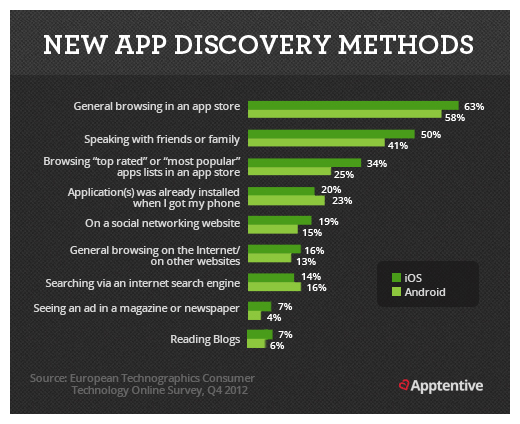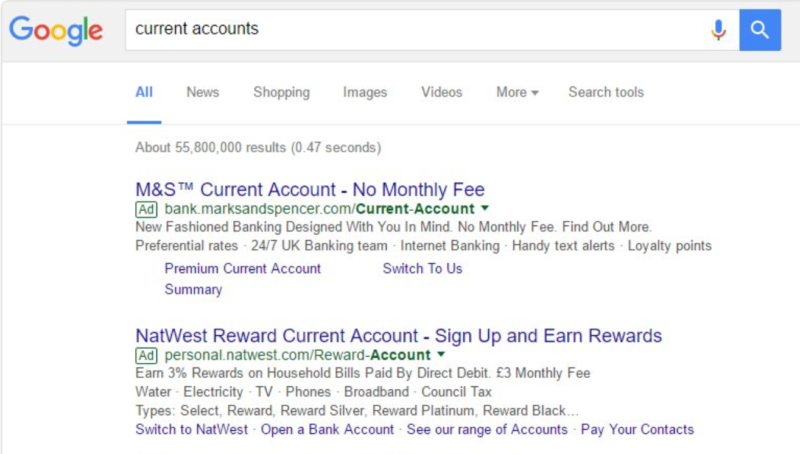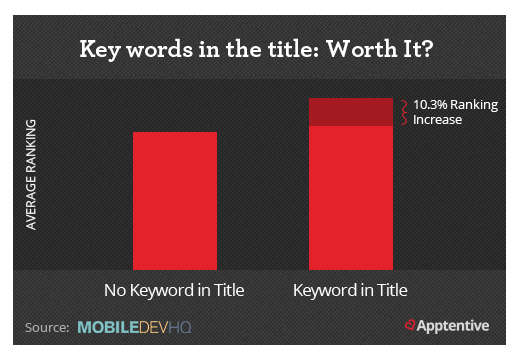Despite the overwhelming amount of success that can be achieved by allocating advertising budgets to the online environment, businesses are still apprehensive about investing into digital marketing. Of course, if done strategically, search engine optimization can be the most rewarding campaign your business can launch due to the immense potential available by ranking highly on Google and Bing. As an agency, we have encountered our fair share of businesses that have expressed hesitancy in allocating a marketing budget to search engine optimization. However, once organic search strategies have been executed and perfected, these businesses have carved their spot on the 1st page of search engines for years to come.
If you need help pitching your senior staff and co-workers on the benefits of search engine optimization, or if you’re still unsure of the potential return on investment from this digital marketing tactic yourself, here are five reasons why SEO is a rock-solid investment.
1. Gain a competitive edge.
Whether you’re just starting out in the digital environment or have had a website for years, the amount of work needed to start ranking well for competitive keywords can vary. Websites built on brand new domains are virtually starting at point zero, which can be problematic if there are a lot of competitors with sites that have been indexed for years. However, if you develop a strategic SEO roadmap, you will be able to generate a lot of momentum by publishing optimized content and building links. While this may require a lot of resources each month, this is your opportunity to match up with the competition and try to get ahead. (more…)
Mastering search engine optimization can be an arduous task for small businesses that do not have adequate resources or time in-house to invest in digital marketing. Even when it comes to local SEO, a good amount of strategic planning is needed to be done on three fronts: onsite, offsite, and locally, the last of which involves optimizing local listings such as Google My Business. However, if you want to start gaining some traction organically, below are some handy tips that can help you capture traffic organically…without annoying end users.
1. Structure your content around your primary locations
Whether you only have one location or operate in several different areas, it’s important to optimize your content, site structure, and meta data around your key geographic areas. For example, if you have a storefront in Montreal, be sure to include the name of your niche market within the page you want to optimize for that area. If you have multiple locations, creating individual pages for each location with unique content can help you push new traffic to the most relevant pages and rank well on search engines. (more…)
*Author’s note: initial post was written for 2017. This has been updated to reflect changes for 2018.
There have been quite a few significant updated in the realm of search engine marketing. While some of the updates focused on the paid side (removal of right column ads, expanded text ads, responsive display ads, etc.), other updates focused on organic traffic. Some of the key updates included the following:
- Removal of right-column ads. While this was more of a paid search update, the impact is felt on the organic side as desktop searches show up to four ads at the top of search results.
- Mobile-friendly update #2. Google launched a second algorithm update a year after “Mobilegeddon,” which gave mobile-friendly websites a boost in rankings on mobile devices.
- Local search algorithm update. Unofficially named Possum, this local search update (while unconfirmed by Google) made a significant change in local search results. Duplicate business listings are filtered out, and more relevant results are shown based on search queries.
- Penguin 4.0. Google *finally* launched a new major Penguin update after a couple of years. Penguin also now runs in real-time and is included in the core algorithm (like Panda).
- Google announce the launched of a mobile-first index, expected to rollout sometime in 2018.
- The Google Search Console was updated to a new interface, looking sleeker and providing webmasters with data past 90 days.
There are many reasons why content marketing has become such a force over the past several years. One of the main reasons marketing professionals all over the world are investing resources into creating content is the advancement made in technology over the past ten years. It has become easier than ever to disseminate information across multiple platforms, ranging from social media platforms & mobile apps to websites, blogs, and newsletters.
Another benefit of content marketing is the prominence of experts within specific niches and verticals. Before the rise of the internet and the proliferation of blogs and content-rich websites, it was nearly impossible for the average writer to make his/her thoughts known to the world, let alone world-class experts. For example, look at Rand Fishkin from Moz, a popular SEO & digital marketing platform for businesses and agencies alike. Rand established himself as an authority in the world of search engine marketing by publishing content, videos, and ebooks, something that could not have been done in the 90s. Rand Fishkin is only one of millions of experts disseminating content on a daily or weekly basis, cultivating massive followings by sharing their expertise, thoughts, and opinions.
Another day, another user experience test launched by Google.
Shortly after shocking the world (well, maybe not the whole world, but rather the search community) by changing the traditional yellow ad label to green, it seems like Google is experimenting with a new design according to screenshots from Twitter user @matibarnes. As exhibited by the screenshot below, the new green ad label has been inverted, with the colour green being used as the outline on top of a white background:
Monetizing your social media following on YouTube just became a little bit easier.
Although YouTube has released a variety of features over the past couple of years that make it relatively easy for popular video stars and social media celebrities to make money, it seems like life just became a little easier with this new Super Chat feature. As of today (on select channels only), anyone that is watching a live stream will have the ability to push their comment to the top for up to five hours. The incentive for end users is having the ability to get their message seen by content creators, avoiding getting lost in an endless stream of comments. Yours truly can attest to the fact that it’s relatively painful to get yourself heard by major influencers when comments are being sent via Facebook, Twitter, Instagram, YouTube, and more. This new feature allows fans to essentially “skip the line” and pay to have their comments seen by influencers and viewers alike. All an end user needs to do is click on the dollar sign button within the chat interface to feature their comment. As of today, the feature is only available on the web and the Android app – iOS support will come later. You can see a little demonstration of the feature below via YouTube’s official blog post. (more…)
Holiday shoppers, ecommerce store managers, social media marketing professionals, and retail employees: the biggest commercial weekend of the year is only a week away.
While football and turkeys will dominate next Thursday, companies all over the United States (and Canada!) will be preparing for the Black Friday madness to begin next week. While Black Friday has traditionally been the time for brick and mortar stores to push specials, the online environment has seen a surge of discounts, promotions, and exclusive sales over the past couple of years. The addition of Cyber Monday to the holiday weekend sales bonanza has only made the madness more appealing for holiday shoppers, with online-only promotions getting their own special day.
With over 2 million apps available on Apple’s App Store, getting your app discovered and to stand out from the crowd can seem like daunting tasks. The majority of apps are discovered by using the search feature, but if people can’t find your app when they type in specific keywords, you’re going to have a hard time being discovered and downloaded.

This is where App Store optimization, or ASO, come into play. If you’re already familiar with website SEO, you’ll notice some similarities when it comes to optimizing your app for the App Store. In this post we’ll be exploring not only why you should be investing in optimizing your app, but also five ways in which you can get started.
-
-
- One of the main factors in ASO is having your keyword in your title. Your keyword with the heaviest traffic should be placed in your apps title, regardless of its difficulty. Keyword research for the App Store should take a slightly different approach to traditional keyword research for website SEO, but is essentially the same.
Utilizing tools such as Google’s keyword planner can be helpful, but the keywords may be too broad. There are plenty of App Store keyword analysis tools which look at which keywords your competitors are using. You can also look for keywords in their titles, throughout the text in their app description and in the text of their 5 star reviews. Looking at the actual reviews you can see what users of the app describe the app as, which is likely going to be what people would type in when they are looking for your app. Focus groups or asking people what they would search for to find your app can also give you an idea of which direction to go in.Be careful though, a character limit of approximately 25 characters is recommended otherwise your title gets cut off in the search results. If your title is cut off, people will be less likely to download as they cannot fully see what the app is or does. While you do need a well optimized title, you also need one that is memorable and will be visible to potential downloaders.
- Optimize your app’s page by using detailed screenshots that show the app in use as well as descriptive videos. This will not only give users who visit your page a better idea of what your app does and how to use it, but it will also boost rankings. The App Store limits you to 5 screenshots, so make the good! Using generic screens such as a login page or menus does not tell potential users much about the app and does not convey any idea of user experience.
- One of the main factors in ASO is having your keyword in your title. Your keyword with the heaviest traffic should be placed in your apps title, regardless of its difficulty. Keyword research for the App Store should take a slightly different approach to traditional keyword research for website SEO, but is essentially the same.
-
-
-
- A well written description with your keyword(s) is just as important in ASO as content on a website is for website SEO. The first few lines are what users will see first, so this is where it is crucial to capture your audience. In three lines you need to convey what you app does, how it is different from others on the market and why the user should want to install it. Next, you want to list the benefits of your app for the user, as well as any quotes from reviews to give your app credibility.
-
-
-
- If you have just launched your app, using other forms of online marketing, such as PPC and social media can help drive people to the App Store to download your app. If Apple sees that many people are downloading your app this can help give your app credibility. The more popular you are the more downloads you’ll get. As ASO takes time, this is where your additional marketing channels come into play. There is research to suggest that the App Store algorithms can detect spammy downloads, such as using bots to download your app, so as always it’s always much better to go down the legitimate route. If you get people who are interested in your app to download it and they use it regularly, you will also see engagement increase – which is not only great from a business point of view, but can also help improve your rankings.
-
-
- Once you have people downloading and using your app you can then start collecting reviews. Reviews can have an impact on rankings but more importantly, higher reviews mean more people to downloading your app. Regularly receiving high starred reviews serves as great endorsement that your app is worth downloading. To increase the number of reviews you can use tactics such as notifications within the app to leave a review after using the app for a specific period of time, or reached a certain number of screens. You can also offer easy ways to get help if the user encounters a problem, or email users who haven’t left a review and prompt them to leave one.
There is great value in App Store Optimization. With a bit of optimization, fine tuning, and research your app could soon reach the top of the charts!
There are three things certain in life: death, taxes, and algorithm updates from Google.
Now while that may be a hyperbolic statement, it is no surprise that Google tweaked with their core engine this month by launching two major algorithm updates: Possum and Penguin 4.0. To better understand how each algorithm update affects the search engine environment, check out the details below.
Penguin 4.0
Date: September 23, 2016.
Percentage of Queries Affected: Unknown – Algorithm now runs in real-time.
Earlier this year, Google introduced Accelerated Mobile Pages (AMP) to users around the world by including these mobile results as part of the “top stories” section. The benefit of AMP for content publishers, webmasters, and users alike is that these pages load significantly faster than traditional pages optimized for mobile devices. For those of you who are unsure of how to find AMP within mobile search results, all you need to do is look for the shiny lightning bolt icon that adorns these specific listings as shown below (and no, the lightning bolt icon does not represent the Tampa Bay Lightning nor the San Diego Chargers).







 (800) 915 7990
(800) 915 7990
